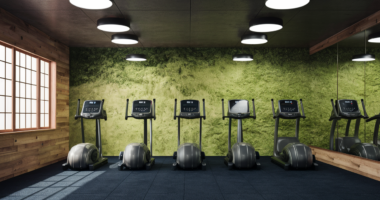I’ve been a long time follower of Brian Shaw’s workout. His ideas were the first that made me think about physical fitness as a process, not as something you have. It also introduced me to the concept of strength training which I have been using as a way of life ever since.
The Brian Shaw Training Program is a personal training program for men and women who want to lose weight, gain muscle, and be healthier. The program consists of 3 workouts, each of which are geared toward a different goal. You will work with your personal trainer to achieve your fitness goals, which will be supported by the coach, Brian Shaw himself.
The widely touted Brian Shaw Training Program is a widely touted method for training, which is designed to help people get in shape and stay in shape. It is a 3-phase program, with 4 months in the “prep phase”, followed by a 6-month “maintenance phase”, and finally a 3-month “mini-maintenance phase”. In order to get the best results from the program, it is important to follow the training protocol precisely, doing everything that is outlined in the 3 phases.
Brian Shaw is one of the all-time great strongman competitors. In 2011, 2013, 2015, and 2016, Brian won the World’s Strongest Man competition four times. He also set a record by reaching the finals of the World’s Strongest Man competition 13 times in a row.
Brian Shaw is a one-of-a-kind talent!
Introduction
- Brian Shaw’s Squat Day, Part 1
- Brian Shaw’s Using an Overhead Press Day, Part 2
- Brian Shaw’s Deadlift Day, Part 3
- Brain Shaw’s Event Day, Part 4
I’ll show you how Brian Shaw prepares for his professional strongman contests, including the World’s Strongest Man, in this thorough tutorial.
Brian’s “champion mentality” is one of the qualities I like about him. Brian has unwavering faith in himself and is ready to go to any length to achieve his objectives.
Brian Shaw explains his perspective in the following video:
“A champion mentality is one of self-belief, vision, conquering any barrier, and pushing oneself to heights that other people consider “impossible.”
ANYTHING IS POSSIBLE… AS LONG AS YOU CAN SEE IT AND BELIEVE IT! ”
Brian Shaw utilized his unwavering faith in himself to set a new world record for the Atlas Stone in 2015.
Lifting a 555-pound atlas stone was thought to be impossible. Brian Shaw defied the critics and proved them all wrong!
To become the world’s strongest man, you’ll need to do more than simply believe in yourself. You must also train more effectively and efficiently than anybody else on the planet!
Brian Shaw, who follows a modified strongman training split, nearly usually trains four days a week. Take a look:
Brian Shaw’s Split Training
- Squat on Monday
- Overhead press on Tuesday
- Deadlift on Thursday
- Strongman Competitions on Saturday
Brian Shaw will be training on four different days.
On Mondays, he works on his squat and does a variety of lower-body auxiliary exercises.
On Tuesdays, he works on the overhead press and other shoulder, chest, and triceps accessory exercises.
On Thursdays, he works on his deadlift and other upper back accessory workouts.
Finally, Brian Shaw practices for strongman events including the super yolk, log press, and atlas stones on Saturday. Brian’s most significant training day is when he prepares for the strongman events he’ll be participating in at his upcoming tournament.
Let’s take a deeper look at how Brian plans his workouts in order to compete against the world’s strongest men.
Brain Shaw’s Squat Day, Part 1
Every Monday, Brian Shaw does a squat workout.
In one of his strongman contests, Brian virtually never has to do the actual back squat. Brian, on the other hand, understands that the squat is one of the most effective workouts for strengthening his legs and whole body.
He works on his squat since it will help him improve his performance in nearly every strongman event, including the farmer’s walk, super yolk, and log press.
With a normal 45-pound barbell, Brian Shaw virtually never squats. Instead, he uses three distinct specialized bars to train the squat:
- The squat bar for safety
- The bar of spiders
- The curved bar
Brian Shaw explains why he enjoys squatting with these specialized barbells in the following way:
“I often get asked why I use so many specialized bars and why I don’t simply squat with the straight bar. It’s because each speciality bar serves a unique function. And in my training, it serves a distinct function for me.”
Brian’s shoulders and upper back are also placed under a lot of strain by the straight bar. This is reasonable since Brain squats with weights in the 600-800 pound area on a daily basis.
Brian Shaw and many other strongman athletes prefer the safety squat bar. The bar is extremely simple to use since it includes a big foam cushion that rests on your upper back and shoulders.
Brian Shaw squatting with this bar may be seen in this video:
Brian prefers this bar over a normal 45-pound barbell because it is easier to recover from. It also helps him carry over to his strongman competitions.
The built-in camber of the safety squat bar ensures that the bar’s center of gravity is in front of your body. When you squat, it seems as though the bar is attempting to push you forward and onto the earth!
To keep you from falling forward when squatting with the safety squat bar, your upper and lower back must work very hard.
Brian Shaw, in other words, utilizes the safety squat bar to strengthen his back in preparation for other strongman competitions like as the Atlas Stones (Atlas Stones) or loaded carries.
The spider bar and the cambered squat bar are both used by Brain Shaw for the same reason: they’re easier on his shoulders and help him develop his upper and lower back.
Let’s take a look at a normal Brian Shaw squat routine. Take a look:
Brian Shaw’s Typical Squat Workout
- Exercise #1: Box squat with a cambered bar, 3 sets of 4-6 reps
- Exercise #2: 3 sets of 10-12 repetitions on the hip extension machine
- 3 sets of 10-12 repetitions on a unilateral 45-degree leg push
- Exercise #4: 3 sets of 10-12 repetitions of lying leg curls
This workout’s training video is as follows:
Brian Shaw uses the cambered bar to complete a couple hard sets during this exercise.
Like a normal 45-pound barbell, the cambered bar rests on your shoulders. The main distinction is that the bar has a large camber in it, which lowers the exercise’s center of gravity.
While squatting, the weights also swing forwards and backwards, making your legs, lower back, and core muscles work much harder.
Brian Shaw explains why the cambered bar is so appealing to him:
“I feel completely different with this cambered bar than I do with a safety squat bar or a spider bar, for example. It has a unique impact. So for now, I’m aiming for the leg drive to really get off the box.
So I think it’s a little easier to lock up and sit back to the box when I’m below this bar, and then really emphasis pushing my hips as I come up off the box. So that’s the primary objective.”
Brian Shaw built up to a couple very hard sets of 4-6 repetitions during this exercise.
Brian like to gradually increase his weights over the course of three to four months as he trains for strongman contests. This allows him to gradually increase his strength without exhausting himself.
Many world-class powerlifters, such as Ed Coan, followed a similar training regimen.
One of the most intriguing aspects of Brian Shaw’s squat training is that he alternates between “heavy” and “speed” weeks. Consider the following scenario:
- Week 1: Squats with a lot of weight
- Week 2: Squats at a Fast Pace
- Squats, Squats, Squats, Squats, Squat
- Week 4: Squats at a Fast Pace
And so on. Brian Shaw discovered that doing big squats and deadlifts every week was too much for him to recover from. He can achieve steady long-term development if he alternates heavy and light weeks.
Here’s an example of one of Brian Shaw’s speed squat sessions. Take a look:
Squat Workout by Brian Shaw
- Exercise #1: 3 sets of 4-6 repetitions of safety squat bar squat with chains (to pins)
- Exercise #2: Leg press with bands at 45 degrees, 3 sets of 8-12 reps
- Exercise #3: 3 sets of 8-12 repetitions of lying leg curls
This workout’s training video is as follows:
Brian Shaw is doing safety squat bar squats with chains for this exercise. He’s also crouching and putting his hands on a pair of safety pins to stop the bar from moving.
Squatting to pins increases Brian’s deadlifting strength by simulating the beginning position of a deadlift, when the weight is lying on the ground.
Brian Shaw prefers to train in the 4-6 rep range rather than the 1-2 rep range used by many powerlifters during his speed squat sessions.
Brian maintains the weight low and concentrates on moving the bar as quickly as possible. Josh Bryant’s compensatory acceleration training and Louie Simmons’ dynamic effort technique are also examples of this.
Brian Shaw discusses his speed squats in the following video:
“Now, as I previously said, this weight felt extremely simple for me, but now is the perfect time to stop since I want to gain additional weight in the future weeks.
It’s a nice weight, but I’m not training to squat a lot of weight; I’m simply using it as a supplement to the deadlift, and I’ve completed that work.”
Brian Shaw’s squat day is a crucial part of his preparation. He utilizes the squat to strengthen his lower body and enhance his performance in all of the other strongman events.
Brian’s utilization of specialized bars and other training equipment like as bands and chains to provide variation to his exercises is fantastic. Athletes that include more diversity into their exercises seem to have fewer injuries and have a longer training career than those who do not.
John Meadows, the renowned bodybuilding instructor, also felt that utilizing a variety of workouts to prevent injuries was critical.
Part 2: Overhead Press Day with Brain Shaw
One of the most significant events for a strongman contender is the overhead press. There are 1-2 overhead pressing events in every strongman tournament, such as the log press, axle press, circus dumbbell press, or viking press.
There’s no avoiding it: if you want to be the world’s strongest man, you’ll need a powerful set of shoulders!
Every Tuesday, Brian Shaw works on his overhead press.
Brian’s overhead press routines are based on a straightforward formula:
- Overhead Press (Exercise 1)
- Incline Press (Exercise #2)
- Flat Press is the third exercise.
- Exercise #4: Isolation of the Triceps
Brian Shaw is a firm believer in the specificity principle.
He begins his exercises with the overhead press, which is the primary activity he wants to improve. To strengthen his chest and triceps, he does a number of different pressing workouts including the incline dumbbell press and the tight grip bench press.
Finally, Brian completes his overhead pressing session with a triceps isolation exercise of some kind.
Brian Shaw does a normal overhead pressing exercise. Take a look:
Workout with Brian Shaw on the Overhead Press
- Exercise #1: 3 sets of 4-6 repetitions of seated military press
- Exercise #2: 3 sets of 8-12 repetitions on a 45-degree incline log press with chains
- Exercise #3: 3 sets of 8-12 repetitions on a flat machine press
- Exercise #4: 3 sets of 8-12 repetitions of cable overhead extension (high pulley).
This workout’s training video is as follows:
Brian Shaw is doing a regular “pressing” exercise. He only worked up to a fairly heavy set of 5 repetitions on the seated overhead press since this exercise was done many months before his next strongman tournament.
Brian does a number of accessory workouts for his chest, shoulders, and triceps after his initial exercise.
Brian Shaw prefers to concentrate on the overhead pressing events that he is participating in as he gets closer to his strongman contests. If Brian is participating in the log press in his next competition, he will begin his training with that exercise.
Here’s an example of one of Brian Shaw’s log press workouts. Take a look:
Workout with Brian Shaw on the Overhead Press
- Exercise #1: 3 x sets of 6-12 repetitions standing log press (from rack).
- Exercise #2: Dumbbell press at 45 degrees inclination, 4 sets of 8-12 repetitions
- Exercise #3: 4 sets of 8-12 repetitions on a flat machine press
- Exercise #4: 4 sets of 8-12 repetitions on a machine overhead press
- Exercise #5: 2 sets of 8-12 repetitions of standing DB lateral raises
This workout’s training video is as follows:
If you’ve never done a log press before, you have no idea how difficult this exercise can be!
The log press is a challenging workout. Because the log is so big, the exercise’s center of mass is pushed farther out in front of your body. This puts a lot more strain on your shoulders and upper back than usual.
Brian goes on to a number of accessory workouts for his chest, shoulders, and triceps after the log press.
On his “events” day later in the week, Brian Shaw also works on the overhead press. Part 4 of this essay will go into it.
Brain Shaw’s Deadlift Day, Part 3
Jón Páll Sigmarsson, a renowned strongman competitor, once said:
“There’s no use in living if you can’t deadlift!”
For a strongman competitor, the deadlift is by far the most significant exercise. Almost every strongman event requires you to raise a weight off the ground, including the atlas stones, farmer’s walk, loaded carries, and log press.
A deadlift event, such as the vehicle deadlift, tire deadlift, or elephant bar deadlift, is usually included in most strongman contests. If you want to be the world’s strongest man, one of your main objectives should be to develop a massive deadlift.
Because Brian Shaw is aware of this, he practices the deadlift every Thursday.
Through trial and error, Brian discovered that he can’t recover from a hard deadlift exercise every week. Instead, he alternates weeks of “heavy” deadlifting with “speed” deadlifting. Consider the following scenario:
Brian Shaw’s Deadlift Workout Routine
- Week 1: Deadlifts, Deadlifts, Deadlifts, Deadlifts,
- Week 2: Deadlift Speed
And so on. Brian Shaw is a savvy guy who plans his workouts such that he only does hard squats or deadlifts once a week. Consider the following scenario:
Week 1
- Squat (Heavy)
- Deadlift at a High Rate
Week 2
- Squat at a High Rate
- Deadlift with a lot of weight
For their squat and deadlift exercises, several world-class powerlifters, notably Matt Kroc, utilized a similar intensity-cycling technique.
So, how does Brian Shaw plan out his big deadlift sessions? That’s a fantastic question.
Brian’s heavy deadlift exercises follow a similar linear periodization pattern. In the eight to sixteen weeks building up to his next strongman competition, he gradually increases his weights.
He is lifting his hardest weights for 1-3 reps in the last 2-3 weeks before his competition.
In the month leading up to his next competition, Brian Shaw did one of his heavy deadlift sessions. Take a look:
Heavy Deadlift Workout by Brian Shaw
- Exercise #1: 3 sets of 1 rep conventional deadlifts
- Exercise #2: 3 sets of 8-12 repetitions on the Good Morning Machine
- 3 sets of 8-12 repetitions on the hip extension machine
- Exercise #4: 3 sets of 8-12 repetitions of lat pulldowns (wide / overhand grip).
- Exercise #5: 3 sets of 8-12 repetitions on a seated machine row
- Exercise #6: 3 sets of 8-12 repetitions of standing cable face pulls
This workout’s training video is as follows:
For this exercise, Brian Shaw builds up to a huge 1,000+ pound deadlift – WOW!
Brian was preparing to compete using a unique deadlift bar known as the “elephant bar.” This unique barbell bends much more than a standard barbell.
Because the 45-pound plates at the end of the barbell are still in touch with the ground during the first few inches of the exercise, it’s simpler to raise the weight off the ground.
The elephant bar, on the other hand, is very “whippy” and difficult to manage.
Briant Shaw didn’t have access to an elephant bar, so he made do with an ultra-long barbell and 45-pound plates that were spread out extremely wide on the barbell. Brian was imitating the elephant bar in order to be as prepared as possible for his upcoming competition.
Brian does a number of upper and lower back ancillary exercises after his hard sets of deadlifts. Brian Shaw does all of his upper back accessory movements on his deadlift days instead of his upper body training days.
Many other strongman athletes, like the one-and-only Eddie Hall, utilize this approach in their training.
Brian Shaw is a very imaginative guy, and his deadlift routines reflect this. He’s come up with some new methods to target weak areas in the deadlift that I’d never heard of before!
Brian’s wildest idea, for example, is to connect a cable pulley to the barbell and have a training partner pull on the wire to provide additional resistance at his weak spot or “sticking point.”
This approach is shown in this excellent training video:
When Brian approaches his stumbling block, his training partner begins tugging on the pulley. He takes a one-second pause at the sticking point before blasting the weight to the lockout position.
This is a more sophisticated type of isometric exercise. Isometric training is used by several other powerlifting instructors, like Josh Bryant, to blast past sticking spots in the deadlift.
If you’re interested, here’s Brian Shaw’s whole isometric deadlift workout:
Isometric Deadlift Workout by Brian Shaw
- Exercise #1: 3 sets of 2 repetitions of conventional deadlift**
- Exercise #2: Deadlift with a trap bar, 3 sets of 4-6 reps
- Exercise #3: 3 sets of 8-12 repetitions of seated cable rowing (alternating arms).
Every other week, Brian Shaw does a hard deadlift workout. Brian enjoys doing several “speed sets” in the spirit of the Westside Barbell training regimen during his off weeks.
The primary advantage of the speed sets is that they allow Brian to perfect his deadlift technique while also allowing him to develop explosive power off the ground without overworking his lower back.
If you’re deadlifting over 1,000 pounds like Brian, you’ll need to cut down on your deadlift training frequency to keep progressing.
The world’s most powerful deadlift Hafthor Bjornsson also like to alternate between “heavy” and “speed” deadlift sessions for this reason.
Brian Shaw’s standard speed deadlift workout looks like this. Take a look:
Brian Shaw’s Deadlift Speed Workout
- Exercise #1: 8 sets of 2 repetitions of speed deadlift**
- Exercise #2: 3 sets of 8-12 repetitions of lat pulldowns (wide / overhand grip).
- Exercise #3: 3 sets of 8-12 repetitions of seated cable rows (V-handle).
This workout’s training video is as follows:
Brian loves to do 8 sets of 2 repetitions with 50-60% of his 1-rep max for his speed deadlift training. Brian performed this speed deadlift exercise with 495 pounds, which is just around the 50 percent-60 percent mark.
Brian gets additional deadlift practice without overworking his lower back or central nervous system with these fast deadlifts.
I strongly suggest alternating heavy / fast deadlift exercises if you want to develop a huge deadlift.
Eric Lilliebridge’s “Lilliebridge Method” training program employs a similar approach.
Brian Shaw’s Event Day, Part 4
You must train for the real strongman events if you want to win the World’s Strongest Man competition. There isn’t any way around it!
The majority of strongman contests consist of five distinct “events” that measure your real-world strength.
Here are some of the most frequent strongman competitions:
- Deadlifts
- The Farmer’s Path
- Yolk Superman
- Carries that are fully loaded
- Overhead Press
- Atlas Stones
Each strongman contender must decide how they will prepare for these events throughout the week. On their normal training days, certain strongman athletes, such as Eddie Hall and Hafthor Bjornsson, train for the strongman competitions.
On his deadlift day, Hafthor Bjornsson, for example, loves to exercise the atlas stones and the farmer’s walk.
Because the deadlift, atlas stones, and farmer’s walk all target the same muscles, it’s a good idea to do them all on the same day.
The main disadvantage of this method is that you must practice strongman events towards the conclusion of your exercise, when you are already exhausted.
Brian Shaw, the four-time world’s strongest man, has a totally different approach: every Saturday, he practices the strongman events on his own. Brian researches the events in which he will compete in his next tournament and concentrates on them.
A typical day in Brian Shaw’s strongman competitions looks like this. Take a look:
Workout for Brian Shaw’s Event
- Tossing a keg is the first exercise.
- Super yolk (Exercise #2)
- Carry the frame (Exercise #3)
- Atlas Stones (Exercise #4)
This workout’s training video is as follows:
As you can see, Brian chooses four different strongman competitions to prepare for and devotes a significant amount of time to each.
One of Brian Shaw’s top objectives for each event day is to fine-tune his technique. He wants to make sure that on the day of his competition, his body knows precisely what to do for each event.
When you’re running with a 1,000+ pound super yolk on your back, the last thing you want to be thinking about is how quickly you can transfer your weight from one foot to the other!
Brian Shaw utilizes a basic kind of linear periodization for his event days, as he always does. He begins by training with relatively low weights in the events. He gradually raises the weight on each workout as he draws closer to his competition.
Brian may use this approach to maximize his strength on the day of his competition without overworking his body.
Brian Shaw’s idea of creating a distinct events day is brilliant. However, there is one major disadvantage that you should be aware of: recovery is very tough.
Brian works on his lower back three times a week: on squat days, deadlift days, and events days.
This isn’t an issue if you have exceptional recuperation abilities. However, if you have difficulty recovering from a lot of heavy lower-body workouts, this kind of training may not be for you.
In such scenario, like Eddie Hall or Hafthor Bjornsson, you may wish to train the events on your squat/deadlift days.
Conclusion
Brian Shaw will be remembered as one of the all-time great strongman competitors.
Brian Shaw’s longevity in the sport is one of the things that most impresses me. In 2011, he won his first World’s Strongest Man competition, and he continues to train to be the greatest in the world!
For more than a decade, no other strongman athlete has ever competed at such a high level.
So, what motivates Brian Shaw to keep going? What motivates him to be the world’s greatest year after year? I’ll let Brian Shaw respond to that question:
“At this moment, it’s less about winning every competition and more about seeing how powerful I can be. Is there any limit to how high I can raise the bar?
That’s what keeps me going. I aim to improve on last year’s performance.
This seems like something from Simon Sinek’s game-changing book The Infinite Game!
Brian will not be vying for his fifth World’s Strongest Man title. He’s competing to see how far he can push himself and how much of his God-given ability he can express in the world.
That is what I refer to as a champion mentality!
Brian Shaw’s brilliance was shared with the globe, and he contributed to elevate humanity’s awareness. I hope his amazing tale motivates you to follow in his footsteps.
Here’s another Brian Shaw quote to boost your spirits even more:
Pushing oneself is what it needs to be about. It’s a really strong thing to have that desire to improve.
I don’t believe I have much more to prove. Nothing is dangling from my shoulders like a burden. But I’m interested in seeing how much better I can get.”
Thank you for taking the time to read this, and I wish you the best of success in your strength-training endeavors!
Mike Jansen, M.D.
Thank you for visiting my website! I’m the creator of Revolutionary Program Design, and my name is Dr. Mike Jansen, PT, DPT. You’ve come to the correct spot if you want to achieve your size and strength objectives quicker. My ambition is to create RPD the best strength training resource on the planet. So take a seat, sit back, and unwind. There has never been a better moment to lift weights or learn about the science and art of strength training program creation.
Recent Articles
The Best Mass Shoulder Tri-Set Routines! is a link to The Best Shoulder Tri-Set Routines For Mass!
The Best Shoulder Tri-Set Routines For Mass!
The deltoids are one of the body’s most complicated muscle groups. According to research, the deltoids contain seven distinct muscle heads rather than just three! In addition, the deltoids have a…
The Ronnie Coleman Push/Pull/Legs Split is a link to the Ronnie Coleman Push/Pull/Legs Split!
Ronnie Coleman’s Legs Split / Push / Pull!
The push/pull/legs split is one of the most effective training combinations ever devised. This split helped many bodybuilders, including the famous Ronnie Coleman, achieve their finest results. If you want to learn anything…
The Brian Shaw Training Program is a series of workouts created by Brian Shaw, coach of the Chicago Bulls. Shaw has become famous for his workout videos, which are really quite simple, but require lots of repetition to get good. For anyone looking to lose weight, get stronger, or get in shape, this video series is a must.. Read more about brian shaw recovery and let us know what you think.
Frequently Asked Questions
How do I exercise like Brian Shaw?
You can use a treadmill or elliptical machine, but the best way to exercise like Brian Shaw is by playing basketball.
Does Brian Shaw use pre workout?
No, Brian Shaw does not use pre workout.
How do you get strong like Brian Shaw?
Brian Shaw is a professional basketball player. You cant get strong like him, but you can try to emulate his game style and work on your own skills.
Related Tags
This article broadly covered the following related topics:
- brian shaw deadlift workout
- brian shaw workout gear
- brian shaw supplements company
- brian shaw supplement line
- brian shaw recovery








